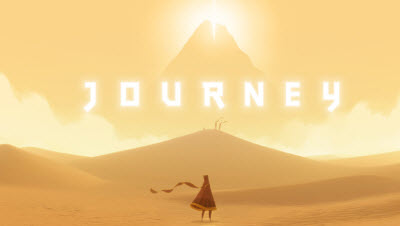GamesBeat: In the hands of a console maker now, what are the different options, or what’s the potential for what they could do with it?
Lasky: Sony hasn’t yet, I think, fully revealed what they’re going to do. My hope is that we’re going to see PlayStation as a service. Because I think that would be truly revolutionary, and that would really push the boundaries and put a lot of pressure on their competitors.
GamesBeat: And what does that mean?
Lasky: I think it means that PlayStation stops being the physical piece of plastic and [that] it starts to be a platform. It starts to be something that exists beyond. Maybe it exists in its purest expression in conjunction with the hardware, but there’s an aspect of it that’s community. There’s a catalog of games that transcends that physical hardware and lives in the cloud.
GamesBeat: And you can log into that service from your iPad or something like that?
Lasky: I think Microsoft is headed in that direction. I think Microsoft’s aspirations for Xbox Live are very similar in the sense of going beyond a dedicated Xbox community and making it more ubiquitous.
GamesBeat: What are you thinking about Kickstarter and what kind of impact that’s going to have on the investment space?
Lasky: I think it’s a really positive development. I heard there was some downstream increase in challenges to venture investment in games. That could be true, but I think that in its current form, it’s more of an alternative to angel investing. At least in terms of the size of the rounds that are being raised. In that way, I think it’s extremely positive because I think it’s allowing that early stage development capital to come into play at a time where it’ll make a huge difference to these games.
Downstream, when we start to see either rounds of $5 [million] to $10 million raised through crowdsourced funding. I’m not sure how exactly that’s going to work. And now I think there’s a sense of novelty about it, where I feel like as a Kickstarter funder I get to participate, I may get early access to the game, I may get a T-shirt, [or] whatever it is that I’m getting as my badge for stepping up.
In the future, I think if one of these companies turns out to be Zynga and worth $4 billion, I’m not sure I’m going to be happy with a T-shirt. I think there’s probably, at some point, going to be some desire for equity. And at that point…think at least initially, it’s extremely positive, and I’m really glad it exists.
 GamesBeat: What are you actually looking for at this point in game startups? You’ve had a few big payoffs. We’re almost done with a kind of round one of game venture investment here. For round two, what do you think is coming?
GamesBeat: What are you actually looking for at this point in game startups? You’ve had a few big payoffs. We’re almost done with a kind of round one of game venture investment here. For round two, what do you think is coming?
Lasky: I don’t think that we know yet, as I said earlier, exactly what the confluence of next-generation publishing is really going to look like. I don’t think there’s actually one answer. I think there may be a variety of answers. There may be a variety of styles that will work and create that sort of outsized return for publishers. And so I’m looking, very broadly, at companies that understand that there are two features of success or value application in the modern world.
One is access to, on a very highly leveraged basis, control of an audience. I think that’s extremely valuable and something that people don’t really pay that much attention to.
I heard your indie panel yesterday. They were singing the praises of Steam. I love Steam. I think Steam is one of the great things to happen to the video game business. That said, when you go do a deal with Steam, you’re in their store, [and] you’re essentially giving up your customers. That may work from a cash flow perspective — you may be able to sell more virtual goods that way — but cash flow and value are kind of two different things. They’re related, but they’re not necessarily lockstep related. So I think there are concerns with some of those moves. I’m looking at companies that understand that there’s an opportunity to actually aggregate an audience themselves and then make use of it.
I’m also looking at companies that really have some kind of a competitive advantage on the content side. I think there’s a lot of cloned crap out there, and I think it’s really bad for the industry. I’ve watched what happens when a game like DragonVale gets to number one on iOS. Suddenly there’s ten other versions of it that hit the store. As a gamer, that bothers me. I don’t like those companies. I like companies that are striking out into some new territory, and I think those kinds of content-related competitive advantages actually also feed back in terms of helping aggregate audiences. Again, you look at CSR from Natural Motion. It’s a game nobody has seen before on the platform, a super-rich, 3D, almost-console quality. I think that helps to sell the product. It helps aggregate the audience.
GamesBeat: Wired recently had a story about companies that were pumping up their user acquisition just so they could get funding, right? We also covered the subject of app rankings manipulation. Do you have to be wary of that?
Lasky: We really do. I’ve seen companies — although, they try to hide the ball to a certain extent — that are spending 60, 70, 80 percent of trailing 30 days revenues on paid customer acquisition, CPI marketing. Again, that may work from a kind of hamster on the treadmill, staying slightly ahead of the grim reaper perspective, but it’s not a way you’re going to aggregate value for a company in the long-term. Anybody can play that game. Being able to buy traffic slightly more efficiently than your competitors has never been a sustainable competitive advantage.
 GamesBeat: You also wrote about mobile distribution, blogging yourself not so long ago. What point of view did you have there?
GamesBeat: You also wrote about mobile distribution, blogging yourself not so long ago. What point of view did you have there?
Lasky: My perspective on mobile has changed a bit. Let’s use an example to talk about this. Let’s look at Gree and DeNA as an example. Here are two companies in Japan, both of which have peaked at about four billion dollars of market cap. Both of them have portals on feature phones, where they can aggregate large audiences, and big publishers like Konami are publishing through DeNA and Gree.
Then the smartphone happened, and they kind of had the same problem in a sense that Facebook has with the smartphone, and that is: On the future phone, they were a platform, [but] on the smartphone, they’re just a collection of apps.
It’s very hard to have that control of the audience when you’re on the top-10 lists or you’re on the deck just like everybody else is. There’s nothing that is reaggregating that audience for you. So what did they do? They came over and acquired Ngmoco to get access to the Plus+ network and some Android games. They acquired, in the case of Gree [and] OpenFeint, to again provide that kind of meta-audience reaggregation. Because they’re trying to replicate on the smartphones what they had on the future phones.
GamesBeat: It’s tough to take a 30 percent cut when you’re in that position, right?
Lasky: It’s arguable. I’m not going to necessarily express my opinion on that. You have to always look at what you’re paying for. I think in the case of the 30 percent that you’re paying to Apple, you’re getting a lot. They’re marketing hardware. They’re marketing the App Store. They’re doing a lot for you. They have credit cards on file so that they can make commerce frictionless. I think that’s worth 30 points.
But I think in terms of some of these other things, your mileage may vary. That said, getting back to investing in mobile against that background where it has been historically very hard to aggregate on the smartphone platform, I’ve stayed a little bit on the sidelines waiting to see how it’s going to shake out. Now I think there’s an opportunity to wade back in and…really get to large revenue run rates without having to get on that CPI marketing treadmill.
GamesBeat: We have Kixeye coming up next. Any thoughts about their company position or where they are?
Lasky: I think it’s remarkable. I think Will’s [Harbin, chief executive of Kixeye] done an amazing job. One of the things that’s most remarkable to me — and I think very recently Facebook put out their top-grossing stats for the first time — the chart position that the Kixeye games have achieved despite their relatively small daily active usage and their relatively small monthly active usage. Vis-à-vis the Zynga games, for example, I think it’s remarkable. And I think it shows the power of that customer, that really core customer. When you look at mobile, social, [and] casual in aggregate, it’s a fraction of the core gaming audience. It’s growing in terms of dollars. It’s been growing faster because it’s been underserved thus far. But we’re talking about almost an order of magnitude — maybe five to 10 times more dollars on the core side than there are on the casual side. As we start to see the mechanics of social gaming combine with the production values of core games, that’s where I think the lid really blows off this thing and it gets really exciting.
[Photo credit: Michael O’Donnell]
VentureBeat's mission is to be a digital town square for technical decision-makers to gain knowledge about transformative enterprise technology and transact. Learn More
